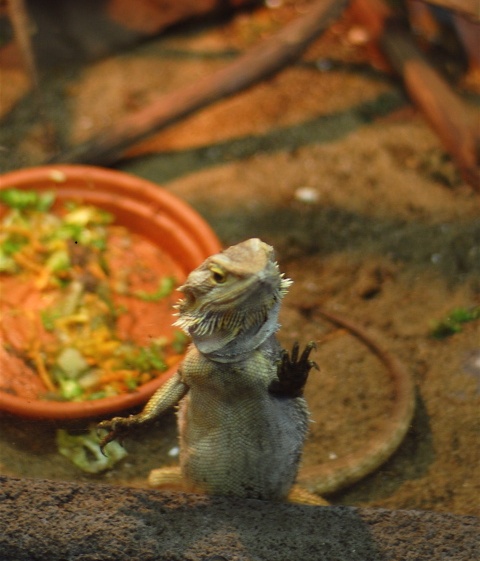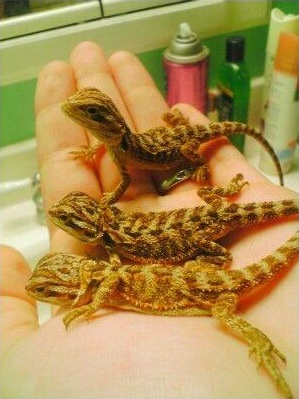Eastern Bearded Dragons (Pogona Barbata)
/Eastern Bearded Dragons Care Sheet prepared by Sue Davis
The most important thing to remember if keeping eastern bearded dragons outdoors, is to provide an escape-proof enclosure with plenty of high perches and basking spots, offer plenty of food and let lizards do the rest.
Eastern Bearded Dragons belong to the Agamidae family and average snout to vent length in adults is 25 centimeters. They have a well-developed "beard" and a strongly depressed body. The inside of their mouth is usually bright yellow. There are many colour variations from grey, yellowish-brown, brown, to reddish-brown etc. Mature males develop a dark grey to black beard and a pale green to blue tinge on the forehead.

Eastern bearded dragons are found in woodlands and dry sclerophyll forests extending into many urban areas in eastern Australia from Cooktown in Queensland to south eastern South Australia. Their habitat is mostly terrestrial and arboreal, preferring elevated perches such as sumps, fence posts, or rocks. they shelter in hollow logs, shallow depressions beneath vegetation or surface debris.
Eastern bearded dragons (Beardies) regularly display courtship or defense actions such as head bobbing, arm waving, head licking, push ups, pawing of substrate, biting, erection of beard, expanding their body and colour changes. Up to 75 separate display sequences have been observed.
In the wild, beardies forage for insects including ants, spiders, small lizards, flowers (especially low, daisy-like species and pansies or violas), fruits and green shoots.
Mating occurs in the spring and gravid females are found from October to February. Clutches of 8 to 35 (average) eggs are laid in shallow burrows and sometimes 2 clutches are laid per season. Eggs hatch at around 54 - 60 days at 30 degrees Celsius. Bearded dragons usually hibernate in the winter but in captivity it is often wise to maintain hatchlings at around 25 degrees and feed weekly to maintain healthy growth.
In captivity, eastern bearded dragons food should be dusted with calcium and vitamin supplements at least once per week. Good brands are Herptivite® or Rep-Cal®, available at most good pet stores.
Suggested insects to feed captive beardies include crickets, wood roaches, mealworms (only adults), grasshoppers, flies, butterflies, bettles, Garden worms, and pinkie mice are also favourites as well as most soft fruits such as melon, berries, grapes, strawberry, apple, and green vegetables and shredded carrot and sweet corn niblets. Flower favourites include hibiscus, dandelions, carnation, squash, clover, nasturtium and daisy.
Always chop fruit and vegetables into very small (finely diced) pieces.
As hatchlings, beardies will live happily in a 30cm x 30cm x 60cm aquarium with a mesh top but as adults, will require much more room as they like to climb and bask. Newspaper makes the most convenient and hygienic substrate for the floor of the enclosure and should be changed at least per week or more often if necessary.
UVB light is essential for most reptiles. Ordinary fluorescent tubes are useless as they provide light only - not UVB that is required for healthy bone development and assists in th digestion of food. The light will need to be within 30cm of the animals to effective.
Beardies also need to keep warm, especially after eating as they cannot digest their food properly without adequate warmth. Around 25 to 30 degrees through the day and from 20 to 15 degrees overnight.
Bearded dragons are diurnal (active during the day) so if you don't have timers fitted to your lights or thermostat, make sure that you manually switch on the UVB light first thing in the morning and turn it off again at dusk.
Beardies can make excellent pets and are easily "tamed". They respond well to lots of handling (often and short is best). Always support a reptile's belly from below.
Suggested reading:
"Keeping Bearded Dragons" - Warren Green and Ty Larson (Australian)
"The General Care and Maintenance of Bearded Dragons" - Philippe DeVosjoli and Robert Mailloux (American)
www.reptilesdownunder.com
Eastern Bearded Dragons like a large, shallow water dish that they can "swim" in.






